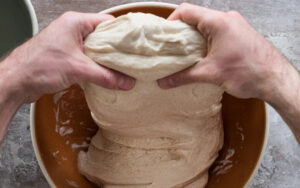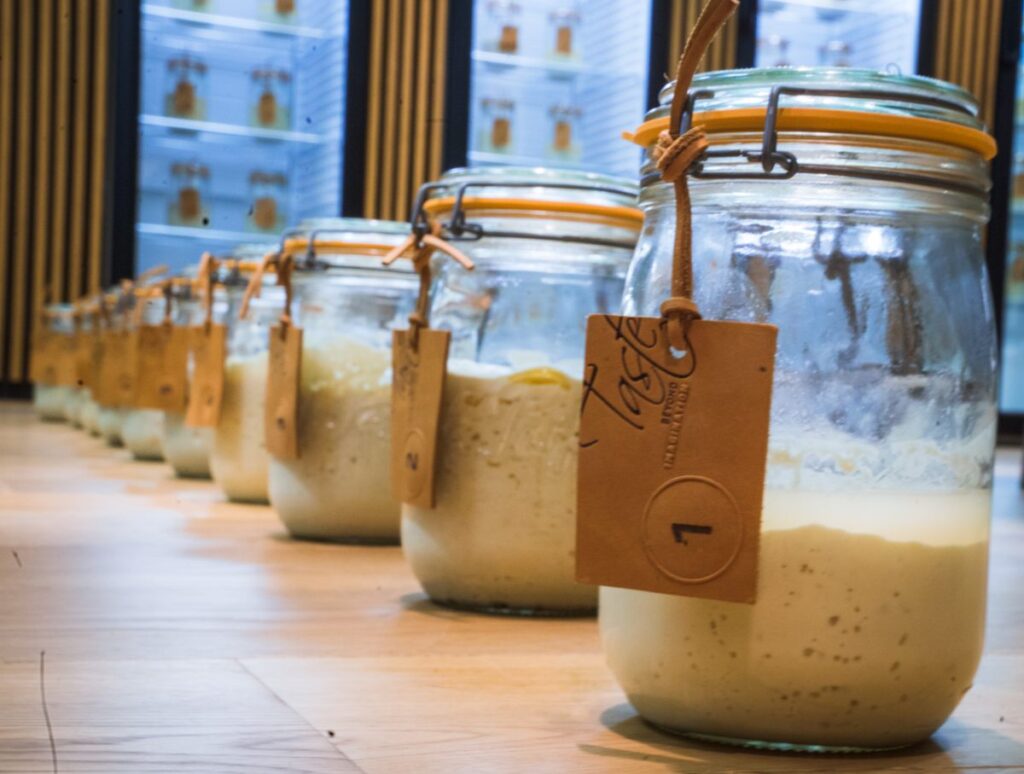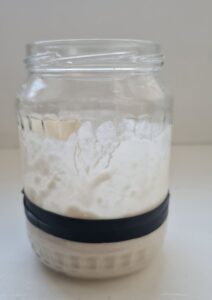Because a sourdough starter is a living culture, they will definitely share some similarities. However, each one will have their own unique personality and the silver bullet doesn’t always work.
- Slow or no activity: Check the temperature and make sure it’s warm enough (around 24°C/75°F). Consider feeding it more frequently, or with more flour and water.
- Not rising: Starters need adequate warmth and moisture to thrive. Ensure that your starter is stored in a warm location (25°C/80°F) and is fed regularly (daily or every other day).
- Not sour: Starters that lack tanginess can benefit from longer fermentation times or be fed a higher proportion of flour to water.
- Mould: If mould forms on the surface, discard the starter and start again. Keep your starter container clean and use a clean utensil to remove any mould.
- Watery consistency: Overfeeding or storing in a warm location can cause the starter to become watery. Discard some of the liquid and adjust the feeding frequency.
- Dying out: If your starter hasn’t been used for a while, revive it by feeding it regularly for a few days until it’s active again.
- Liquid on top: This is called “hooch” and is a sign of overfeeding or underfeeding. Pour it off, and feed the starter with equal parts flour and water.
- Sour odour: This is normal, but if it becomes too strong, feed the starter more frequently or use a smaller amount in your recipes.
- Runny consistency: This can happen when too much liquid is added. Add more flour and stir until desired consistency is achieved.
- Grey or black spots: This is mould and the starter should be discarded.
If you continue to have issues, try adjusting the temperature, feeding schedule, or flour/water ratio until you find what works best for your starter!







